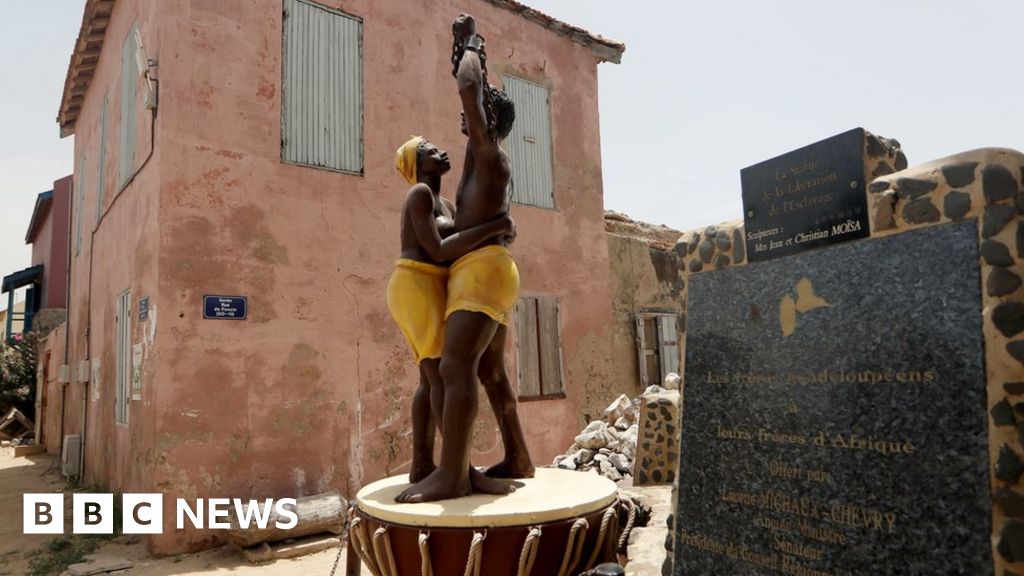
 Image copyright
Image copyright
Reuters
More than 12 million Africans were forcibly transported across the Atlantic to work as slaves.
A major DNA study shed new light on the fate of millions of Africans who were traded as slaves to the Americas between the 16th and 19th centuries.
More than 50,000 people participated in the study, which was able to identify more details of the “genetic impact” that trade has had on current populations in the Americas.
It exposes the consequences of rape, abuse, illness and racism.
More than 12.5 million Africans were traded between 1515 and the mid-19th century.
Some two million enslaved men, women, and children died on the way to the Americas.
- Looking for my slave roots
- Moving to Ghana ‘to escape racism’
The DNA study was led by consumer genetics company 23andMe and included 30,000 people of African descent on both sides of the Atlantic. The findings were published in the American Journal of Human Genetics.
Steven Micheletti, a 23andMe population geneticist, told the AFP news agency that the goal was to compare the genetic results with the slave ships’ manifests “to see how they agreed and how they disagreed.”
While much of their findings are consistent with historical documentation of where people in Africa were taken from and where they were enslaved in the Americas, “in some cases, we see that they disagree, quite surprisingly,” he added.

Media playback is not supported on your device
The study found, in line with the main slave route, that most Americans of African descent have roots in territories now located in Angola and the Democratic Republic of the Congo.
What was surprising was the overrepresentation of Nigerian descent in the United States and Latin America compared to the recorded number of enslaved people in that region.
The researchers say this can be explained by the “intercolonial trade that occurred mainly between 1619 and 1807.”
They believe that enslaved Nigerians were transported from the British Caribbean to other areas, “presumably to maintain the slave economy, as the transatlantic slave trade was increasingly prohibited.”
Similarly, the researchers were surprised to find underrepresentation of Senegal and the Gambia, one of the first regions from which slaves were deported.
The researchers attribute this to two bleak factors: many were sent to work in rice plantations where malaria and other dangerous conditions were rampant; and in later years, more children were sent, many of whom did not survive the crossing.
Image copyright
fake pictures
Some two million people did not survive the horrendous conditions on board the ship.
In another horrible discovery, the study found that the treatment of enslaved women across the Americas had had an impact on the modern gene pool.
The researchers said that a strong bias towards the contributions of African women in the gene pool, despite the fact that the majority of slaves were men, could be attributed to “the rape of enslaved African women by slave owners and other exploitation sexual”.
In Latin America, up to 17 African women for every African man contributed to the gene pool. The researchers attributed this in part to a policy of “branqueamento”, racial whitening, in several countries, which actively encouraged the immigration of European men “with the intention of diluting African descent through reproduction.”
- ‘My Nigerian great-grandfather sold slaves’
Although the bias in the British-colonized United States was only from two African women to one African man, it was no less exploitative.
The study highlighted the “practice of forcing enslaved persons to have children as a means of maintaining an enslaved workforce close to the abolition of transatlantic trade.” In the United States, women were promised freedom in exchange for reproduction, and racist policies opposed mixing of different races, the researchers note.

Media playback is not supported on your device
The Black Lives Matter movement has illuminated the damaging legacy of colonialism and slavery in African Americans and others of African descent around the world. Statues of colonial-era slave traders have been demolished as protesters demand an end to the glorification of the symbols of slavery.